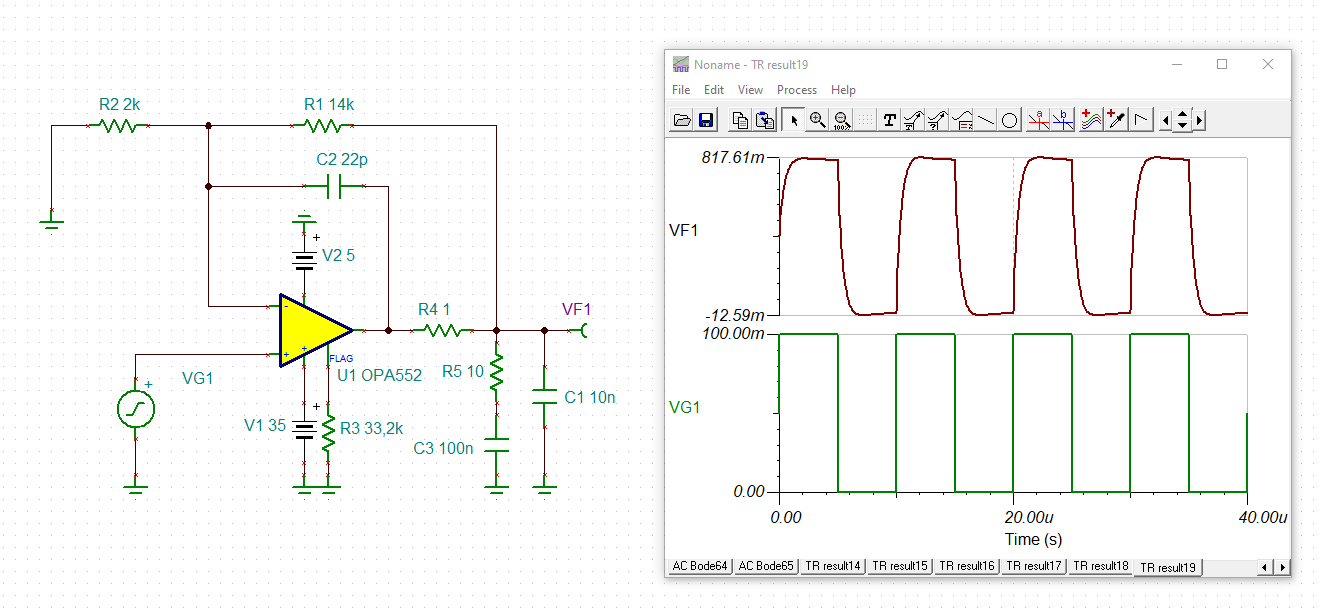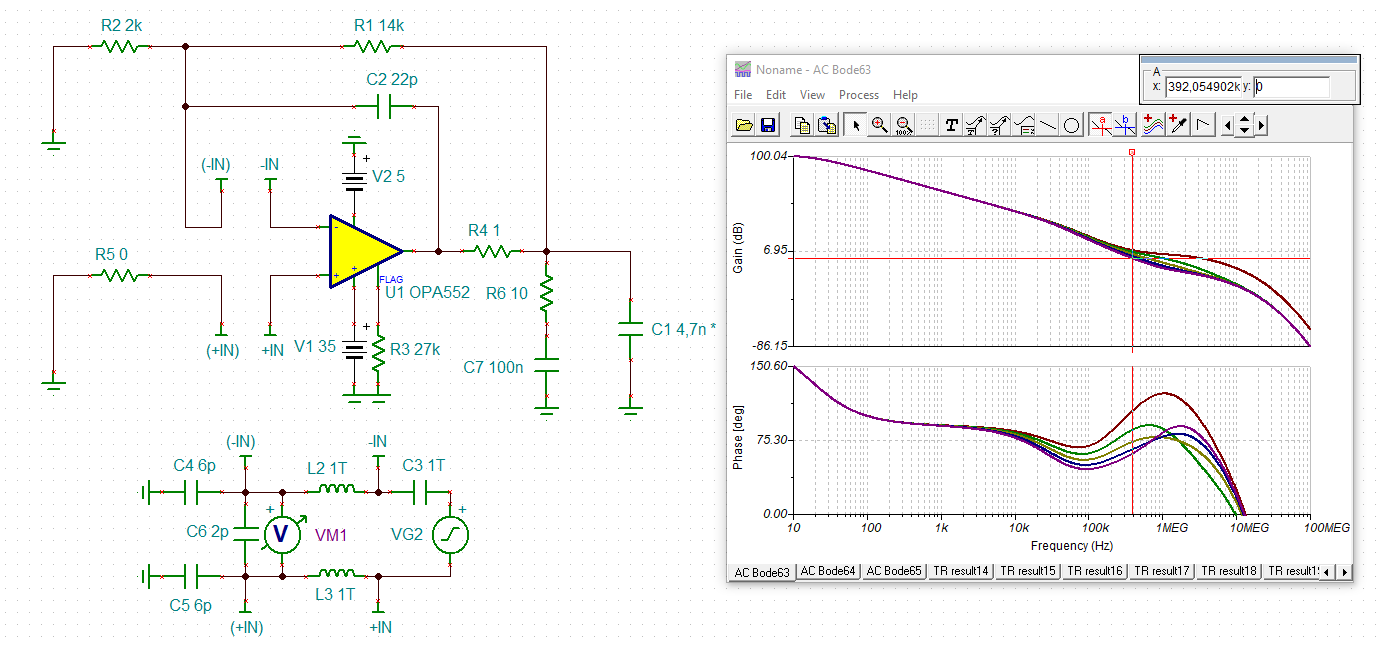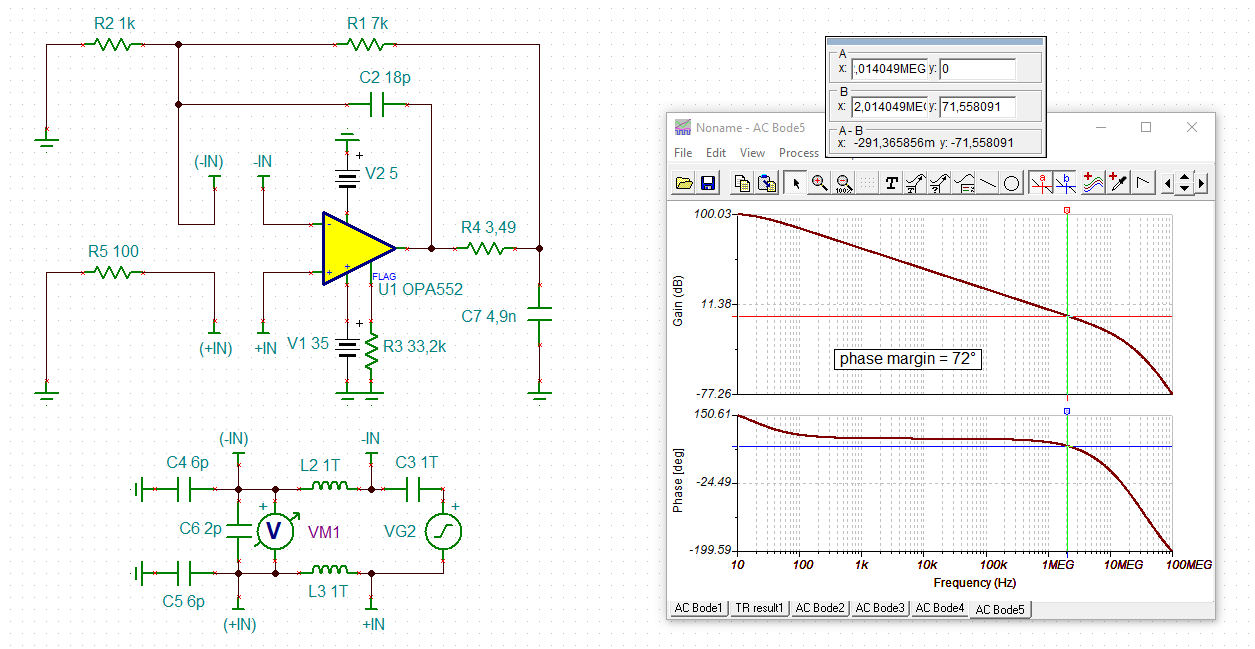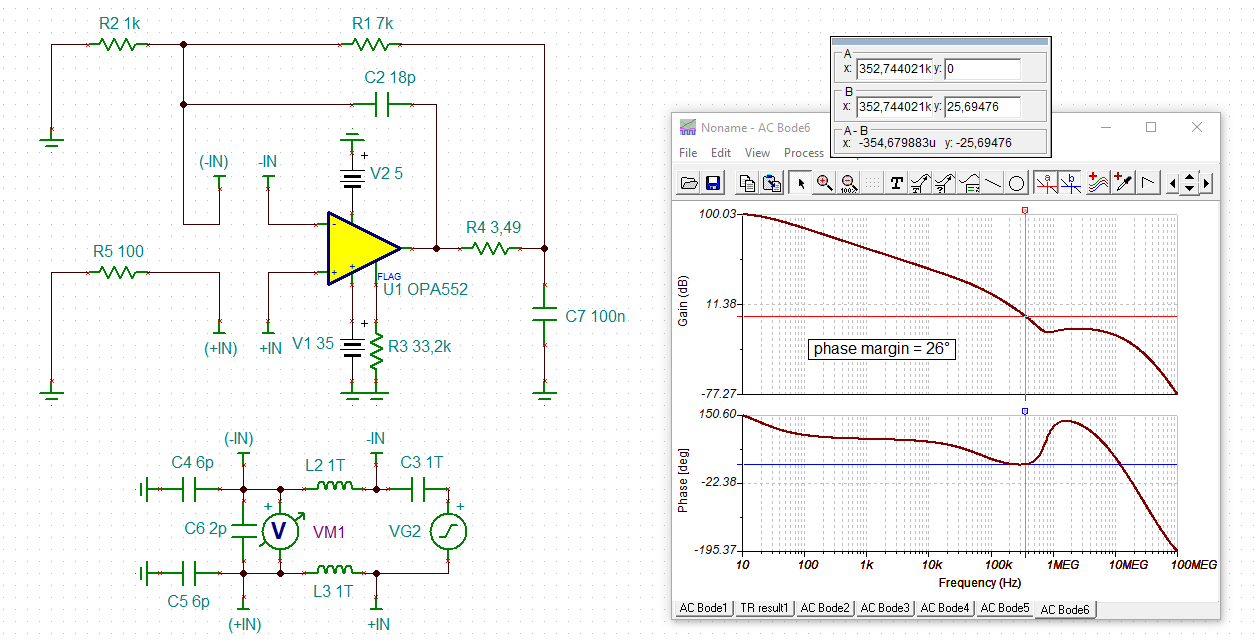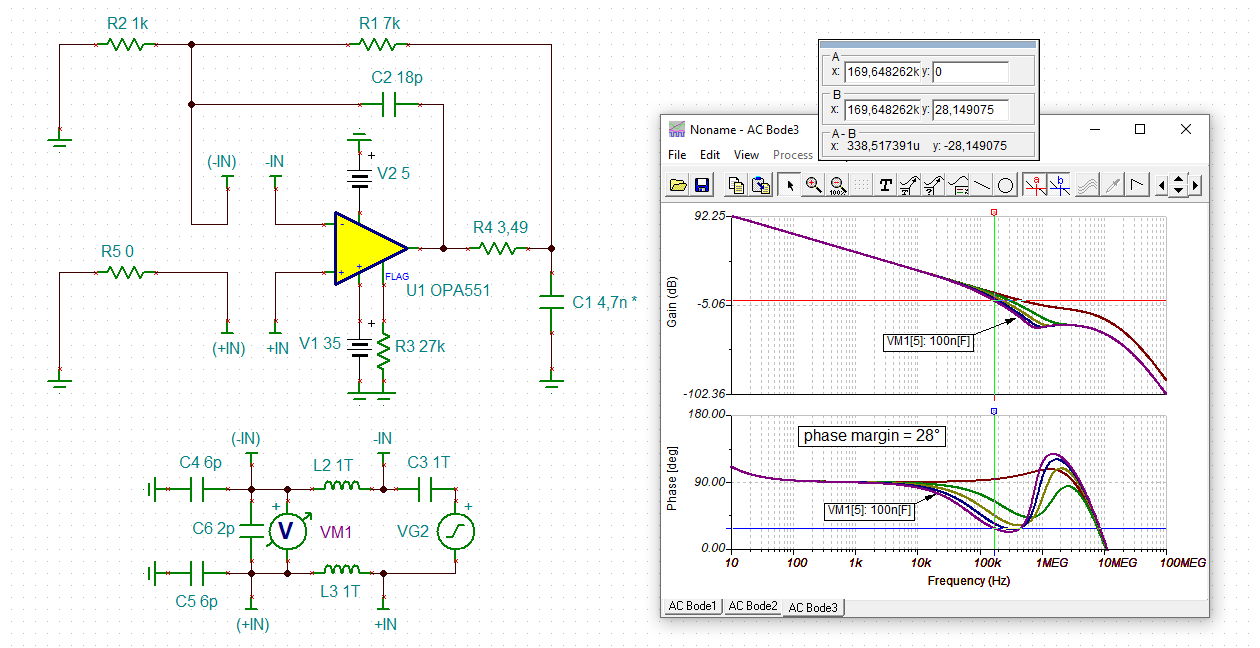Other Parts Discussed in Thread: OPA551, TINA-TI
Hi team,
We are using the OPAMP OPA552 in our design as a non-inverting amplifier with Gain8 as shown in figure 1.
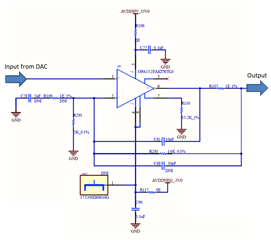
Figure 1: Amplifier Circuit
We are seeing more stability problems with this OPAMP. The details are mentioned below,
- The input of the Amp. is driven with 5V, 100KHz square waveform
- The output of the Amp. is connected to capacitive loads (4.7nF used here)
- We are seeing the oscillation as shown in Figure 2
Note : This just an example. We have tried with different frequencies & different capacitive loads, still stability problem is there.

Figure 2: Stability Issues
We need your inputs in how to deal with this problem.
Regards,
Ahamed Faize


